The average marketing and sales targeting overlap in B2B companies is just 16%, according to figures released in 2024 by LinkedIn.
That number should give anyone in a marketing leadership role pause.
This is supported by research from B2B Marketing that shows that 83% of B2B marketers find the absence of deep account insight presents a challenge, with one-third citing it as “a big challenge”.
At a time when performance pressure is rising and budgets are under scrutiny, a gap this wide in audience understanding carries commercial risk, not just in strategy alone, but in day-to-day execution.
Audience misunderstanding in practice
A common thread we’ve seen across client conversations, campaign post-mortems, and even within our own industry, is that misunderstanding your audience rarely shows up as a dramatic failure.
It tends to manifest more subtly… A great-looking campaign that underperforms, messaging that just doesn’t land, or channels that quietly drain budget without contributing much in return.
Sometimes it’s a mismatch of message and mindset. For example, we’ve seen teams assume that performance-led messaging, such as speed, scalability, ROI would land well with infrastructure leads evaluating cloud platforms. But internally, those stakeholders may be navigating a far more complex set of concerns like integration risk, stakeholder politics and resistance to change. What appears to be a product decision on the surface often carries layers of internal context that never make it onto the website or in external communications.
Another situation we’ve observed is the instinct to aim messaging squarely at the CEO. It makes sense, they sign off budgets after all. But what’s often missed is how much weight lies in the recommendation that lands on their desk. If the broader buying group isn’t on side, the most compelling top-level message may never get the chance to be heard. It’s not about deprioritising senior stakeholders, but it is about making sure the full decision-making ecosystem is reflected in your strategy.
The hidden cost of getting it half right
One of the things we often reflect on with clients is how every asset carries opportunity cost. That LinkedIn newsletter, podcast series, or whitepaper – if it’s misaligned with the real needs, preferences or language of the audience, it may still have some clicks and impressions to report back, but won’t create meaningful traction.
Sometimes the insight we’re working from, e.g. personas, buying stages, content preferences, is just too broad or too static. We’ve come across buyer profiles created years ago, still used as the holy grail foundation, despite significant shifts in the market or the internal structures of the businesses being targeted.
It’s understandable, insight work can feel like a big faff, but when it becomes disconnected from real-world decisions, it quietly limits effectiveness across the board.
We’ve found the teams that navigate this best are those who treat audience understanding as a continual process, not a one-time exercise. They don’t wait for a massive research budget; they listen in on sales calls, run quick win/loss reviews of deals, pressure test ideas with frontline teams who deal with customers day to day. They don’t aim for perfection, they aim to get closer.
Insight isn’t just for ideas, it’s a great filter
We’ve noticed a recent shift in how some high-performing teams use insight, not just to generate ideas, but to reduce surface area. A deeper understanding of content and channel preferences can help teams make sharper trade-offs.
One client recently used their own audience research to confidently step back from multiple social platforms and focus efforts on just one where the audience spent the majority of their time. Another chose to go deep on audio content, not because it was trendy, but because that format genuinely aligned with their target persona’s habits and content needs. These kinds of decisions aren’t always obvious from the outside, but they reflect a level of clarity that often enables stronger creative and smarter allocation of effort.
Where to start (without blowing your budget)
Sharpening your audience understanding thankfully no longer requires a six-figure research budget. There are a number of things any team of any size can do to deepen their understanding.
- Get the entire team listening in on sales calls at a regular cadence – even better, if you can document key findings and share this insight internally and with agency partners, you’ll have a scalable process for distributing the voice of the customer.
- Run qualitative interviews – even a handful of conversations will reveal more nuance than a third-party persona template. Again, we love when this kind of insight is documented and shared with us as a partner.
- Pair with quantitative data – Tools like Hotjar, GA4 and your CRM can show what is happening, this is made even more powerful when combined with the qualitative why. Bringing in your agency on this analysis can be incredibly valuable, as they are often close to the day-to-day digital and performance data.
How we can amplify your efforts
When it comes to audience insight, we know there’s often a wealth of knowledge inside your business already, from sales conversations to customer feedback to instinctive understanding built over years. We love getting to grips with that. It helps us build better recommendations, sharper messaging and more resonant creative from the start.
At our best, we act as an extension of your thinking. Not just by asking who the audience is, but stress-testing how your marketing is showing up for them across touchpoints. We’re always thinking audience-first: What do they need? Where are they? What’s getting in their way? What language are they using that we’re not?
And where there are gaps, whether that’s in segmentation clarity, content mapping, or simply validating assumptions, we can help fill them. Not by reinventing the wheel, but by bringing structure, outside perspective and thinking that make the insight actionable across your campaigns.
It’s not about doing more. It’s about doing the right things, more effectively.
A parting thought
If there’s one pervasive myth we’d challenge, it’s the idea that all audiences within a sector behave the same. Even within the same buying group, motivations and preferences diverge. The CIO and the operations lead might be in the same room, but they’re not hearing the same message in the same way. Recognising that complexity doesn’t necessarily mean having to do more, it’s about designing campaigns and activities to address that nuance right from the beginning.
For any CMO or senior marketer working in B2B right now, audience understanding isn’t about adding more to your plate; it’s about cutting the right things, with confidence. More relevance means better focus.
We help senior marketers get sharper on who they’re really trying to reach and what that means for campaigns, channels and creative. Want to explore what that means for you? Book a no-obligation chat today.

Kiri Craig, Managing Partner
Kiri has been working in marketing agencies for almost 20 years, and in that time she has worked across a range of B2B and B2C sectors, from large enterprise clients to SMEs.
For the last decade, Kiri has been focused solely on B2B marketing, and as Managing Partner of onebite, Kiri draws on this experience to feed into B2B demand generation strategies for our clients and prospects, and to oversee onebite’s delivery.
At onebite, she’s curated a team of B2B demand generation specialists from the best talent on the market, helping our tech and telco clients launch, refine and amplify their brands to generate long-term revenue growth. Kiri’s passion and drive to deliver exceptional work for our clients is evident to everyone who meets her.




